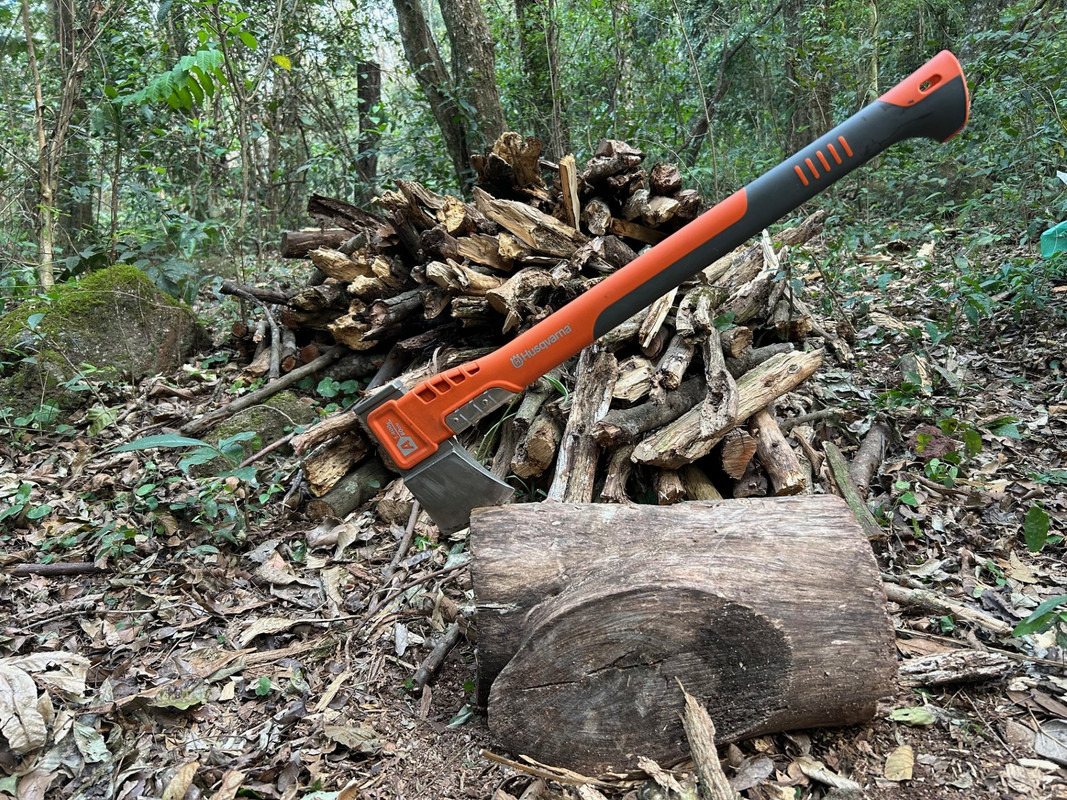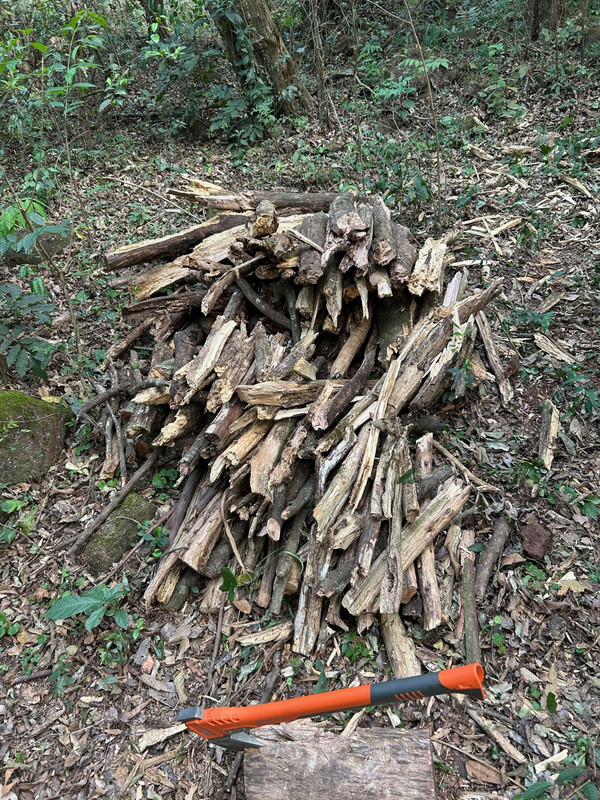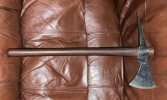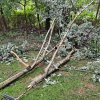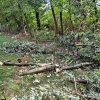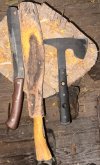PATC? They're active in NVA.
-
The BladeForums.com 2024 Traditional Knife is available! Price is $250 ea (shipped within CONUS).
Order here: https://www.bladeforums.com/help/2024-traditional/
You are using an out of date browser. It may not display this or other websites correctly.
You should upgrade or use an alternative browser.
You should upgrade or use an alternative browser.
Lets use those axes for what they were ment for.
- Thread starter rplarson2004
- Start date
I was with PATC for over 20 years. A lot of my posts are from Shenandoah NP trails. Chopping that Michigan softwood now.Sorry, yes, PATC
kwantam
ALL GLORY TO THE HYPNOTOAD
- Joined
- Jan 28, 2010
- Messages
- 24
Yesterday's work (and text describing it):
(Sorry for the imgur album rather than a direct post here...)
(Sorry for the imgur album rather than a direct post here...)
Square_peg
Gold Member
- Joined
- Feb 1, 2012
- Messages
- 13,850
- Joined
- Jul 3, 2019
- Messages
- 14,799


Mucking around a bit with a trunk of a tree I couldn’t finish processing before the weather got bitterly cold. The Cordwood Challenge takes a while. Can’t let a new axe stay new though!
- Joined
- Jul 3, 2019
- Messages
- 14,799
Thank you for the kind words! It’s the FortyTwoBlades-designed Woox Forte axe. It’s a fun axe to swing.Nice chopping! What axe is that one?
today was an other axe day! well to be fair: hatchet day! i made kindling for a start; to burn in the fire pit. then i swap for my carving one, to make a maul haft, i also used a froe, a drawknife, a sort of rasp /plane (made by stanley" no connexion")then; i went to the forest: i picked up my bushcraft hatchet, i harvested punk wood to make amadou, then i picked up a real amadouvier fungus. i managed to make an carve several things out there... no axe involved today , my fire wood is allready stacked for winter! however i fell a birch yesterday iand i did no so well it has been to long since i did it!
- Joined
- Apr 4, 2023
- Messages
- 349
- Joined
- Sep 22, 2024
- Messages
- 19
This is an old dayton pattern head of unknown manufacture. 40+ yrs ago the handle broke off and I tried using it as a wedge with the apparent results. My dad grouched at me at the time and the head got lost in the back of the shed. We're cleaning all that out now, and I found it- so cleaned it up and hung it on a 34" haft to make up for the neglect of ages ago. No idea about the manufacturer, it feels like 4 lbs or so- but works fine  I've been using it after breaking rounds down to quarters- its fast and pleasantly accurate compared to the 5lb Council which does hit harder on the big stuff. I have a couple other old heads waiting for hafts.
I've been using it after breaking rounds down to quarters- its fast and pleasantly accurate compared to the 5lb Council which does hit harder on the big stuff. I have a couple other old heads waiting for hafts.
I prep the hafts by soaking them overnight in linseed oil, then wipe off and fully submerge just the head in more of it for a 2nd night. Once thats all done I give the haft a quick scrub with steel wool so its smooth.
I like having the heavy sledge w/ wedges and maul handy, then smaller lighter axes for the finer work. More stuff to carry out of the shed when the time comes for splitting but I like the clinking of the heads knocking together as I walk

I prep the hafts by soaking them overnight in linseed oil, then wipe off and fully submerge just the head in more of it for a 2nd night. Once thats all done I give the haft a quick scrub with steel wool so its smooth.
I like having the heavy sledge w/ wedges and maul handy, then smaller lighter axes for the finer work. More stuff to carry out of the shed when the time comes for splitting but I like the clinking of the heads knocking together as I walk

Last edited:
Mick Boardman
Platinum Member
- Joined
- Jul 15, 2020
- Messages
- 3,126
Mick Boardman
Platinum Member
- Joined
- Jul 15, 2020
- Messages
- 3,126
Hello everyone.I'm back with an axe story! I went to get my firewood, with 3 axes .sort of cordwood challenge to myself. When I got there, the smallest 1kg Goldenberg broke cleanly under the eye after the third blow! The second 1.5kg was loose in the handle, and the last one, about 2kg, was fitted crooked! All with homemade handles. I had to redo all three! I put a wedge back in the middle one and reshaped the wood a little, remade a straighter, thinner, and shorter handle for the big one out off the crooked one, and finished a drying handle for the small one!
meanwhile i had to get back home to get another bunch of axes to process wood!
meanwhile i had to get back home to get another bunch of axes to process wood!
- Joined
- Dec 25, 2023
- Messages
- 151
Yeah that could be a fun project. It seems like the first thing you would need for efficient bucking would be a heavy immovable base like a big beam or log. Then add some pegs or a v channel to hold the target wood steady. I guess that would about do it. The backing beam could also serve as a nice bench when not being used for bucking.
I fell, buck, and split about a cord every year with just an axe, and I use none of those things. Unlike splitting, you dont buck downwards, you stand next to or on the log and buck from either side. Even the "either side" thing is a generalization, I typically buck from each side but angled down a bit, so the top gets opend up for better access as you work further under the log. The downward angle fluctuates depending on the size of the log and how its lying, I fell all my wood selectively in thick timber... if portions of the log are suspended a bit above the ground when it lands, it makes it easyer to keep the axe out of the dirt but it also means I've got to chop out my notches with more of a downward angle to get through the bottom cleanly.
A bit of planning goes a long way towards keeping the log from hopping around too. I'll typically notch the log on one side all the way down before actually hacking off any rounds from the other, leaving the limbs on as long as possible. Often rather than go from end to end I'll shuffle through the various sections in conjunction with limb removal to best advantage, usually leaving a few big ones to keep it from rolling when I come at the other side. When you finally do take off the rounds I'll do the butt end first, since it takes lots of swings you want the rest of the log holding it still. Then the top, since its so light you also want it attached to a fair bit of log, then the middle, once again working around whatever limbs you've left attached to best advantage.
Hard to get a picture of it all since my axe cut wood ends up mixed in with all the stuff I cut with a power saw, but heres a face-cord-plus I hauled in, right now I've got about 3 more of these that are seasoning in the bush for the summer, and I'll haul them out with a big toboggan when it snows.
 RIMG0076 by https://www.flickr.com/photos/153108294@N08/, on Flickr
RIMG0076 by https://www.flickr.com/photos/153108294@N08/, on Flickr
Last edited:




